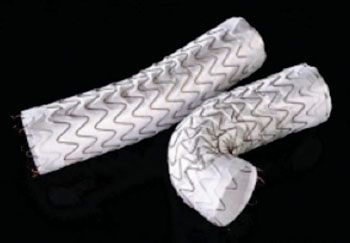New Guidelines on MRI Safety and Compatibility of Medical Devices
By MedImaging International staff writers
Posted on 13 Jan 2015
The US Food and Drug Administration issued new guidance recommendations on magnetic resonance imaging (MRI) compatibility—or in some instances, incompatibility—of implants that do not require electricity to service their function, such as intracranial aneurysm clips, cardiovascular stents, endovascular grafts, and transprostatic tissue retractors.Posted on 13 Jan 2015
The topic of MRI-safe devices, up to now, has mostly centered on devices such as pacemakers, and more recently cochlear implants, both of which use electronics. Now, however, the FDA (Silver Spring, MD, USA) has three principal concerns about patient safety in regards to these so-called “passive” implants in the MRI setting: the displacement forces and torques on magnetic substances, which can turn devices into deadly projectiles; radiofrequency heating that can burn patients; and the distorting effect of implants upon an MRI scan. The FDA recommends four tests described by standard setting institution, American Society for Testing and Materials (ASTM) International, to tackle these three safety issues, and provides additional details about the way those tests should be performed. For example, the guidance reported that “the testing should encompass the range of sizes of the device you intend to market.”

Image: Endovascular grafts, such as W.L. Gore’s TAG thoracic endoprosthesis, are among the “passive” implants subject to the new guidance (Photo courtesy of Gore Medical).
MRI scans are provided in various magnetic field strengths, measured in Teslas. “Although commercial 1.5 T MR systems are currently the most common, 3 T MR systems are becoming more common. A medical device that is classified as MR Conditional in a 1.5 T scanner may not be safe to scan in an MR system with a higher or lower field strength,” the guidance cautioned.
The implant’s labeling should describe the device as “MR Safe,” “MR Unsafe,” or “MR Conditional,” as defined by ASTM International in standard F2503-13. Lastly, the fourth category, “Safety in MRI Not Evaluated,” may be suitable in some instances, but not for those passive implants that are known to present MRI compatibility issues, are a new device type or contain ferromagnetic materials.
Related Links:
US Food and Drug Administration













.jpg)
